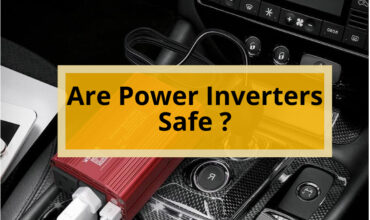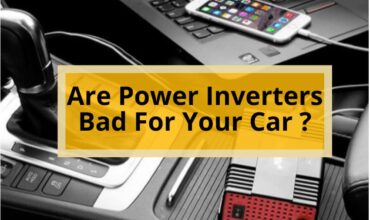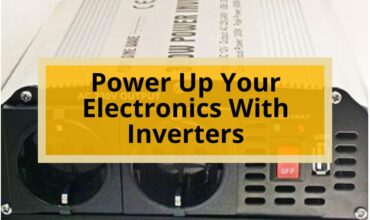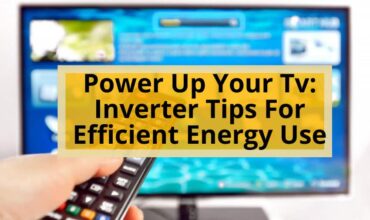Inverters have become an indispensable component in modern power systems, facilitating the conversion of DC power into AC for use in various devices. However, it is essential to understand the power usage and efficiency of inverters to avoid unnecessary energy consumption and reduce electricity costs.
Inverters draw power even when not in use, making it crucial to assess their power usage and efficiency accurately. As the demand for inverters continues to increase, it is essential to understand the factors that affect their power usage and efficiency.
This article aims to explore the technical aspects of inverters, including how they draw power when not in use, factors that affect their efficiency, and how to calculate their efficiency. Additionally, we will discuss the importance of energy monitoring and usage policy in maintaining the optimal performance of inverters.
Understanding these aspects will enable consumers to make informed decisions when purchasing and using inverters and promote energy efficiency in modern power systems.

Power Draw in Standby Mode
In the context of inverters and power usage, the standby mode of an inverter draws power, an amount which varies based on the inverter’s design and standby system, as well as the energy stored and current drawn.
Standby power consumption can be a significant factor in overall power usage, especially for inverters that are used infrequently or for short periods. It is not uncommon for an inverter to draw power even when it is not in use, much like a sleeping giant that quietly consumes energy without appearing to do much.
To reduce idle power usage, some inverters have standby modes that can be disabled or adjusted. Inverters with adjustable standby modes can be set to a lower power consumption level, reducing the amount of energy that is consumed when the inverter is not in use.
In some cases, it may be possible to turn off the inverter completely when it is not needed, further reducing standby power consumption. By reducing idle power usage, it is possible to save energy and reduce the overall cost of operating an inverter.
Energy Monitoring Benefits
The implementation of an energy monitoring system provides numerous benefits, including the ability to detect low power levels and track battery usage. Here are some key advantages of using an energy monitoring system for your inverter:
- Improved Battery Life: An energy monitoring system can help you keep track of the battery usage and prevent over-discharge, which can lead to a shorter battery life. It allows you to monitor the battery voltage and current, and set alarms to alert you when the battery is running low.
- Cost Savings: By monitoring your energy usage, you can identify areas where you may be wasting energy, and take steps to reduce it. This can lead to significant cost savings over time.
- Remote Monitoring: Many energy monitoring systems allow you to monitor your inverter remotely, using a smartphone app or web interface. This can be especially useful if you have multiple inverters or are monitoring a system in a remote location.
- Easy Troubleshooting: An energy monitoring system can help you quickly identify any issues with your inverter, such as low power levels or a malfunctioning battery. This can help you troubleshoot and resolve issues more quickly, reducing downtime and maintenance costs.
Overall, implementing an energy monitoring system for your inverter can provide numerous benefits, from extending battery life to reducing costs and improving efficiency. By keeping track of your energy usage and monitoring your system for issues, you can ensure that your inverter is operating at peak performance and maximize the return on your investment.
also read : Generator Safety: Understanding Carbon Monoxide Risks
Efficiency Compared to Other Supplies
Compared to traditional sources of electricity, such as generators or grid power, inverters have a higher level of efficacy, which is one of the reasons they are becoming increasingly popular in various applications.
Inverters are more efficient than traditional uninterruptible power supplies (UPSs), which usually have an efficiency of about 85%. In contrast, inverters have an efficiency of around 90% to 95%, depending on the model and design. This means that inverters convert more of the battery’s energy into usable electricity, resulting in less energy loss and a longer battery life.
In addition to their higher level of efficacy, inverters also have a lower environmental impact compared to traditional sources of electricity. Inverters do not emit harmful pollutants or noise, making them a cleaner and more sustainable option for powering various devices and appliances.
Moreover, by reducing energy waste and optimizing energy consumption, inverters can help to reduce overall energy consumption and carbon emissions. As such, inverters are increasingly being used in various sectors, including residential, commercial, and industrial applications, to reduce energy costs and promote environmental sustainability.
Frequently Asked Questions
What are the most common types of inverters and how do they differ in terms of power usage?
The most common types of inverters include grid-tie, off-grid, and hybrid inverters. In terms of power efficiency, grid-tie inverters are highly efficient while off-grid inverters may have lower efficiency due to battery charging losses. Hybrid inverters combine features of both.
Can an inverter be damaged if it is left on for extended periods of time without being used?
Long term use of an inverter without being utilized can cause damage, leading to a decrease in efficiency and lifespan. Regular inverter maintenance can prevent damage caused by extended periods of non-use.
Are there any specific safety measures that need to be taken when using an inverter?
Inverter safety measures include proper ventilation, grounding, and following manufacturer’s instructions. Precautions for inverter usage include avoiding overloading, using appropriate cables, and monitoring battery levels. These measures can prevent electrical hazards and damage to the inverter.
Can an inverter be used to power all types of electronic devices or are there limitations?
Compatibility concerns and power requirements must be considered when using an inverter to power electronic devices. Limitations exist due to variations in input voltages and frequency requirements. Consult the manual and technical specifications for proper usage.
Is it possible to modify an inverter to improve its efficiency or reduce its power consumption?
Modifying an inverter to improve efficiency or reduce power consumption is feasible, but cost effectiveness varies. Input voltage greatly impacts inverter efficiency, with higher input voltages resulting in greater efficiency. Technical expertise is necessary for safe modification.






